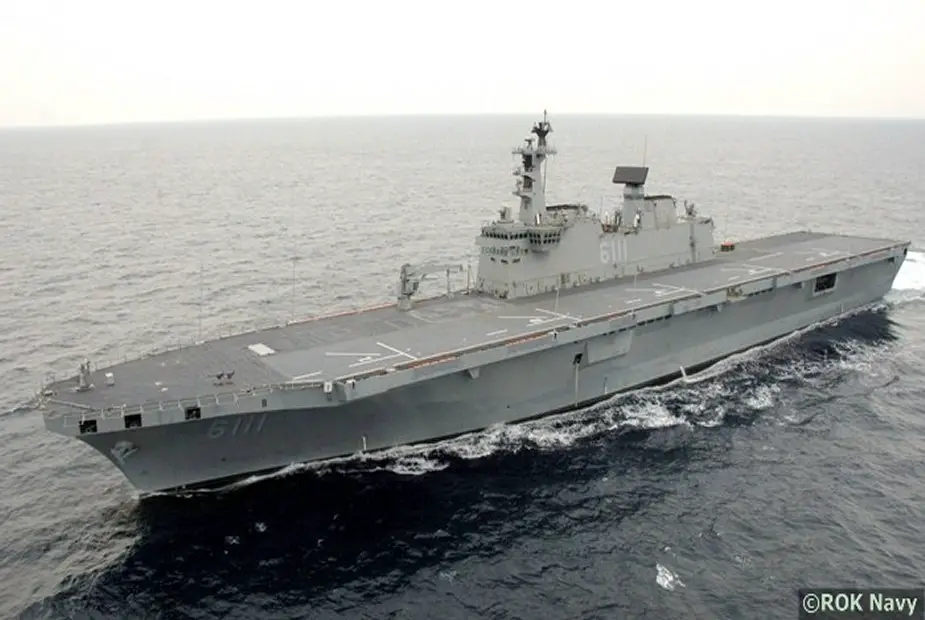Breaking news
South Korea making the transition to a Blue Water Navy.
With the renewed threat from North Korea and the rising challenges of an assertive China, South Korea has initiated a range of naval, air and land acquisition programs that will support the Republic of Korea’s transition towards developing a robust, deployable, conventional power projection and deterrence focused force. Through its new naval programme, the ROK Navy looks forward to transitioning toward a Blue Water Navy.
 A Dokdo-Class Landing Platform Helicopter of the ROK Navy (Picture Source: ROK Navy)
A Dokdo-Class Landing Platform Helicopter of the ROK Navy (Picture Source: ROK Navy)
Developing a Blue Water Navy has been a major focus of South Korea's response to the mounting capabilities of its rival North Korea and to China's continued assertiveness in the South and East China Seas. Due to the threat brought by such power projection, South Korea also needs to strengthen its military capabilities, especially by projecting its own power outside its borders, protecting South Korea's interests in the whole Asian Region.
The centrepiece of Korea's transition towards a Blue Water force is the Dokdo-Class vessels, which are slightly smaller than the Royal Australian Navy's Canberra Class amphibious warfare ships – however, unlike HMA Ships Canberra and Adelaide, Korea is actively pursuing the acquisition and introduction of F-35B Joint Strike Fighters to provide an integrated fleet air defence and maritime strike capabilities.
While the Dokdo vessels serve as the flagship in Korea's Navy restructuration, Korea also recently announced plans for three additional 7,600-tonne Block II Seejong the Great-Class Aegis guided missile destroyers worth a total of US$ 3.3 billion, to be completed by 2028. These vessels are expected to serve part of Korea's broader integrated air and missile defence capabilities with a secondary focus on anti-surface and land attack capabilities. Still seeking to develop its missile defence capabilities, South Korea plans to broaden the design and extend the capabilities of the nation's destroyer fleet with the planned introduction of six evolved KDX-IIA Aegis powered destroyers, supported by a fleet of advanced guided missile frigates.
Along with its surface fleet, Korea also seeks to enhance its submarine capabilities. Therefore, to complete its fleet of locally produced variants of the German-designed Type 214 submarines, South Korea is to begin the development of four advanced Dosan Ahn Changho-Class submarines, which are designed to serve a role similar to the larger ballistic missile submarines of the larger superpowers, urged by the recent ballistic missile tests held by North Korea. These large, conventional submarines are part of the US$ 2.9 billion KSS-III programme and are expected to have a range of about 10,000 nautical miles, combine endurance, relatively-high speed for a conventional submarine and an integrated land-attack capability through locally developed cruise and ballistic missiles.


























